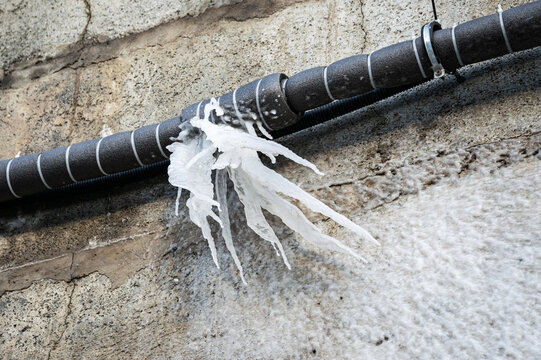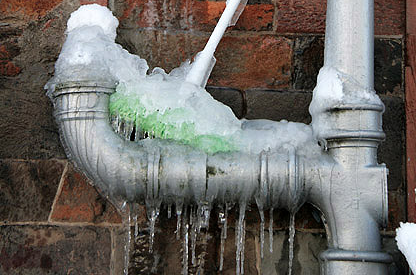Important Advice to Avoid Frozen Pipes in Cold Weather
Call TodayWere you trying to locate critical info concerning Prevent Frozen Pipes ?

Winter can ruin your pipes, specifically by freezing pipelines. Below's exactly how to prevent it from occurring and what to do if it does.
Introduction
As temperatures decrease, the threat of icy pipes boosts, possibly leading to pricey fixings and water damage. Understanding just how to stop frozen pipelines is vital for property owners in cold environments.
Prevention Tips
Shielding susceptible pipelines
Wrap pipelines in insulation sleeves or use warm tape to shield them from freezing temperatures. Concentrate on pipes in unheated or outside locations of the home.
Heating methods
Maintain indoor spaces adequately heated, particularly locations with pipes. Open cabinet doors to enable cozy air to flow around pipelines under sinks.
Just how to identify frozen pipes
Search for lowered water circulation from faucets, unusual odors or sounds from pipes, and visible frost on exposed pipelines.
Long-Term Solutions
Architectural adjustments
Take into consideration rerouting pipes away from exterior wall surfaces or unheated areas. Include added insulation to attics, basements, and crawl spaces.
Updating insulation
Purchase premium insulation for pipelines, attic rooms, and wall surfaces. Appropriate insulation assists maintain consistent temperature levels and minimizes the threat of frozen pipelines.
Safeguarding Outside Plumbing
Yard pipes and outside faucets
Detach and drain garden hose pipes before winter season. Install frost-proof spigots or cover outside taps with shielded caps.
Comprehending Icy Pipes
What creates pipelines to ice up?
Pipes ice up when revealed to temperatures listed below 32 ° F (0 ° C) for prolonged durations. As water inside the pipelines ices up, it expands, taxing the pipeline wall surfaces and possibly triggering them to rupture.
Risks and damages
Frozen pipes can result in water system interruptions, home damages, and expensive fixings. Ruptured pipes can flood homes and cause extensive structural damages.
Indicators of Frozen Piping
Determining icy pipelines early can avoid them from bursting.
What to Do If Your Pipes Freeze
Immediate actions to take
If you suspect icy pipelines, keep faucets available to soothe stress as the ice melts. Utilize a hairdryer or towels taken in hot water to thaw pipes gradually.
Conclusion
Avoiding icy pipelines requires positive actions and quick feedbacks. By recognizing the causes, indicators, and safety nets, home owners can shield their pipes during cold weather.
5 Ways to Prevent Frozen Pipes
Drain Outdoor Faucets and Disconnect Hoses
First, close the shut-off valve that controls the flow of water in the pipe to your outdoor faucet. Then, head outside to disconnect and drain your hose and open the outdoor faucet to allow the water to completely drain out of the line. Turn off the faucet when done. Finally, head back to the shut-off valve and drain the remaining water inside the pipe into a bucket or container. Additionally, if you have a home irrigation system, you should consider hiring an expert to clear the system of water each year.
Insulate Pipes
One of the best and most cost-effective methods for preventing frozen water pipes is to wrap your pipes with insulation. This is especially important for areas in your home that aren’t exposed to heat, such as an attic. We suggest using foam sleeves, which can typically be found at your local hardware store.
Keep Heat Running at 65
Your pipes are located inside your walls, and the temperature there is much colder than the rest of the house. To prevent your pipes from freezing, The Insurance Information Institute suggests that you keep your home heated to at least 65 degrees, even when traveling. You may want to invest in smart devices that can keep an eye on the temperature in your home while you’re away.
Leave Water Dripping
Moving water — even a small trickle — can prevent ice from forming inside your pipes. When freezing temps are imminent, start a drip of water from all faucets that serve exposed pipes. Leaving a few faucets running will also help relieve pressure inside the pipes and help prevent a rupture if the water inside freezes.
Open Cupboard Doors
Warm your kitchen and bathroom pipes by opening cupboards and vanities. You should also leave your interior doors ajar to help warm air circulate evenly throughout your home.

I am very drawn to Prevent Frozen Pipes and I am praying you appreciated my blog posting. Make sure you pause to distribute this blog posting if you enjoyed it. Thanks a lot for taking the time to read it.
Detail